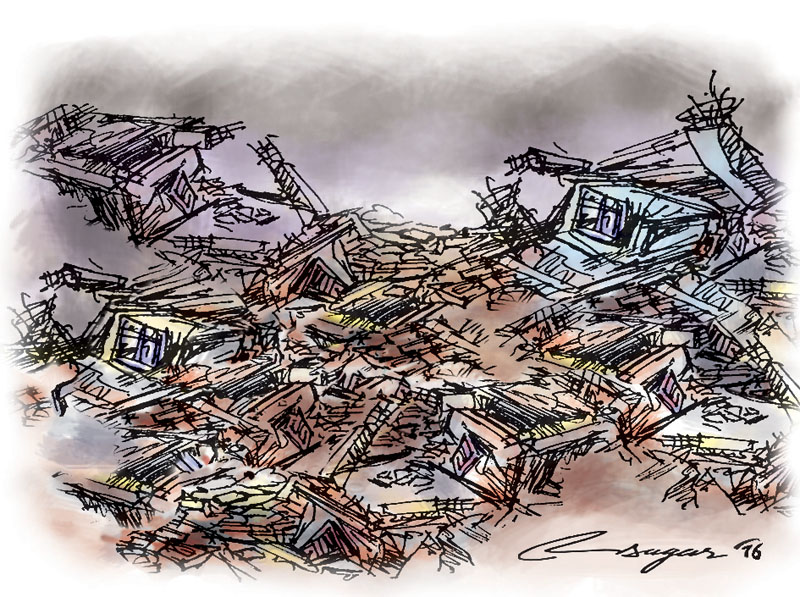Disaster preparedness pathetic
Kathmandu, July 6
Monsoon has already entered Nepal. But as in the past, the government has not adequately prepared itself to tackle possible disasters in terms of precautionary measures and emergency response and relief.
There still remains a huge coordination gap among government, non-governmental, humanitarian, inter-governmental and development agencies as well as the private sector in relation to tackling natural disasters, including floods and landslides across the country, according to a senior government official.
Under-secretary at the Ministry of Home Affairs Shankar Hari Acharya, who heads the National Emergency Operation Centre at MoHA, said there was lack of coordination among the concerned agencies and stakeholders when it came to tackling incidents of floods and landslides and minimising possible losses.
An average of 300 people die each year due to floods and landslides in Nepal, which is ranked the 30th most vulnerable country in the world to floods and landslides. The country has suffered annual economic damage exceeding US$ 10 million.
According to updates made available by the home ministry, at least 32 persons have been killed and nine are still missing in floods and landslides that struck parts of the nation in the last two months.
Several districts, including Saptari in the east and Kaski in the western development region, also recorded fatal water-induced disasters in the last couple of days. “Since mid-April, the death toll from natural disasters has reached 497 across the country till date,” the MoHA record shows.
Admitting the government’s lack of preparedness in dealing with the monsoon floods and landslides, NEOC Chief Acharya said that delay in adoption of integrated Disaster Risk Reduction and Management Act had adversely affected the preparedness or response and recovery tasks during disasters and such a situation had also led to absence of coordination among different agencies attending to disaster-related issues.
Some of the immediate actions such as enhancing the capacity of search and rescue teams, storing sufficient relief materials, identifying and preserving open spaces and increasing the engagement of people in disaster management, among others, must be taken to minimise losses, he pointed out.
A senior officer at the Office of the Prime Minister said there was no significant progress in terms of having in place emergency response and preparedness actions that had been set in different disaster-related documents including in the National Disaster Response Framework or the National Disaster Risk Reduction Policy and Strategic Action Plan, prepared by development agencies that spent millions of rupees.
According to him, the development agencies and a handful of INGOs often use the issues of climate change and disaster management or preparedness as a cash cow in Nepal. “For instance, the nation suffers loss worth hundreds of million rupees every year due to water-induced disasters, while development agencies spend millions of rupees annually in Nepal under the heads of climate change and disaster risk management or preparedness.”
Flood and landslide incidents
Year
No of Incidents
Deaths
Missing
Injured
2011
481
250
118
151
2012
209
131
47
54
2013
417
215
155
75
2014
162
251
262
138
2015
78
131
36
93
2016
580
257
45
185
TOTAL
1,927
1,235
663
696






